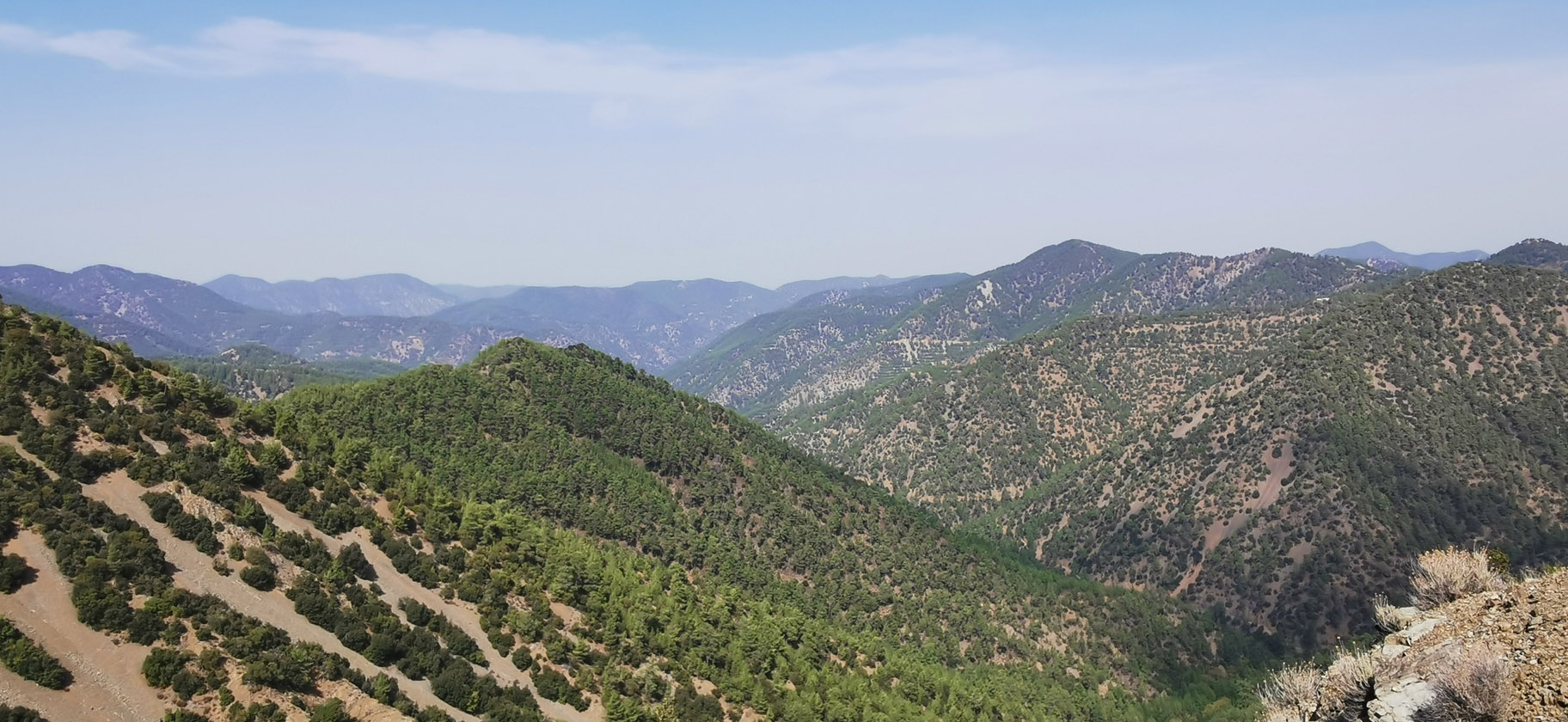Driving Cyprus
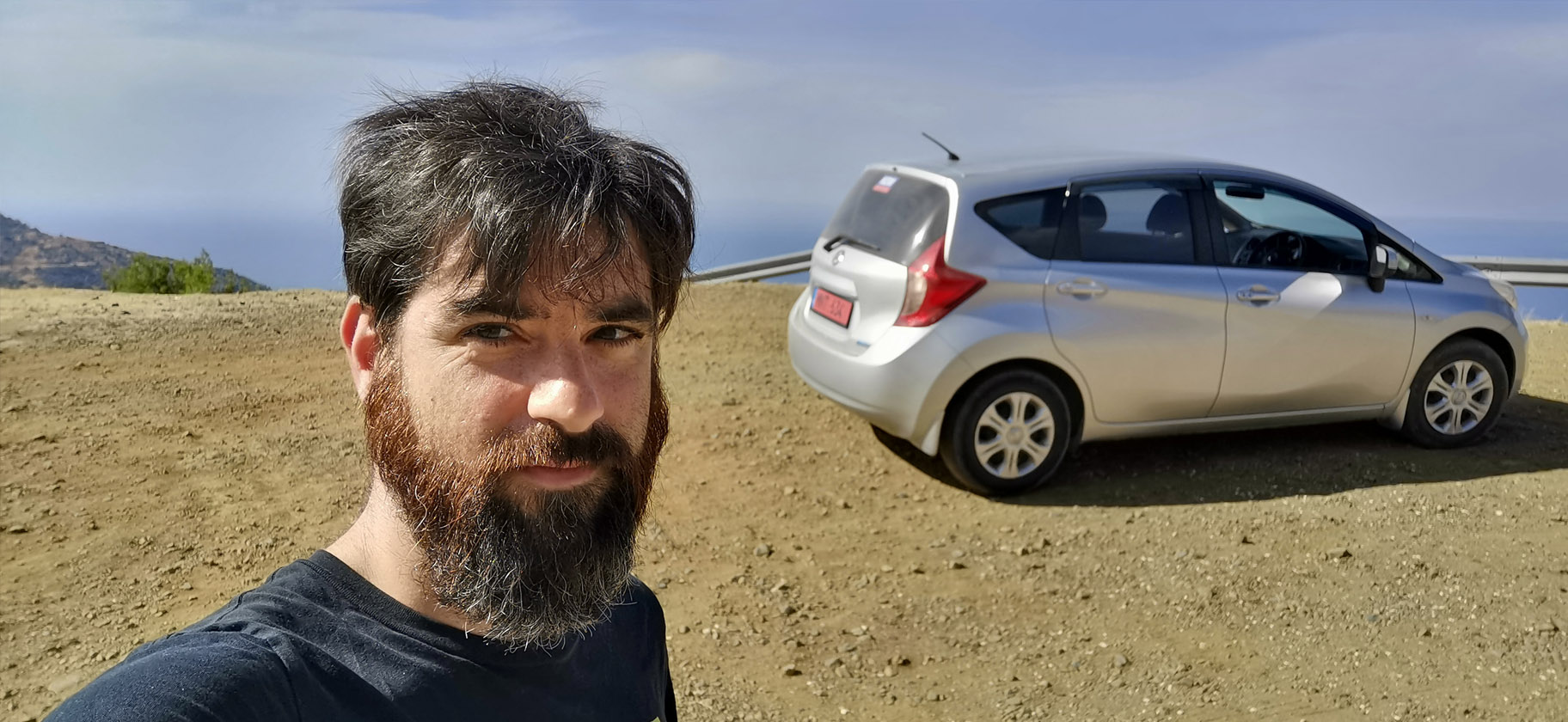
The agent from the rental office who was supposed to collect me from the airport and take me to my rental car picked up a couple with the surname Burr, instead of me, Mr. Baird. It set us back a bit time-wise, but I had arrived early in the morning with little else to do but get my car and get on the road. I am going on faith that the Burrs eventually found their tour group.
Getting from the rental office to my accommodation along a smooth highway was simple enough, but there was little, initially, to instill confidence that driving in Cyprus was going to be easy. There has always been a strong British presence in Cyprus and so driving, as it was in Scotland, was on the left side of the road, but driving an automatic car this time around took some of the mental load off. There are numerous signs as one leaves the airport to remind drivers to drive on the left side of the road, but I have been told that there are numerous fatal car crashes every year involving foreigners driving rental cars who have failed to heed those warnings. I had only checked myself in and walked a couple of hundred meters up the road to the shops to procure provisions when, upon my return, right in front of where I was staying was a major fender-bender. Off the main highways, the roads in Cyprus wind about haphazardly so you can never be quite sure what is around the next corner and ex-pats warned me to drive with caution because the locals do not.
I did not hit resistance until I was headed up north toward Poli with a stop by Lara beach hoping to see nesting sea turtles. It was here that I ran into unpaved roads for the first time. Most people heading to Lara Beach were in 4x4s or speeding along in little all-terrain dune buggies. You would have been hard-pressed to find anyone else scooting around in a Kia sedan as I was. Now that the terrain was a little more on the wild side, Cyprus began to reveal its character. Heading up from the beach at Lara Bay there is nothing but an old single-lane track up the mountain – that or head back along the dirt road to Paphos and take the highway. I chose the track.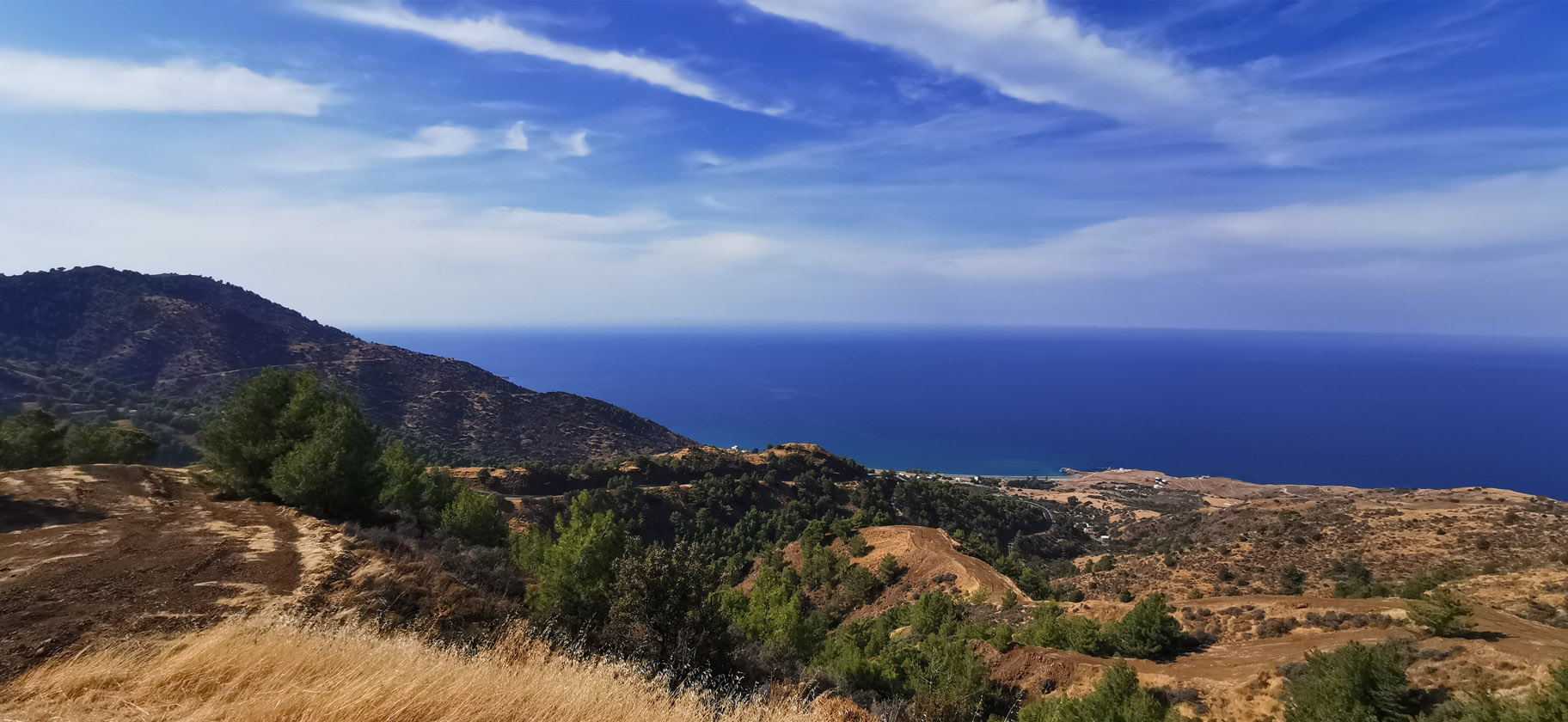
The track squiggles its way uphill and the road is dry and cracked from years of erosion and no repairs. It is a road few venture along and the hour-long drive, before I reconnected with the highway, yielded only two other motorists headed in the opposite direction. The road runs along the side of the mountain so when two cars do come face to face with one another there is a brief negotiation of who can most safely back up to a spot wide enough to let the other pass. Occasionally the palms that line the road scrape against the side of the car. Lizards occasionally scurry across the road – the way for automobiles is a slow one so they know they can safely make it to the other side.
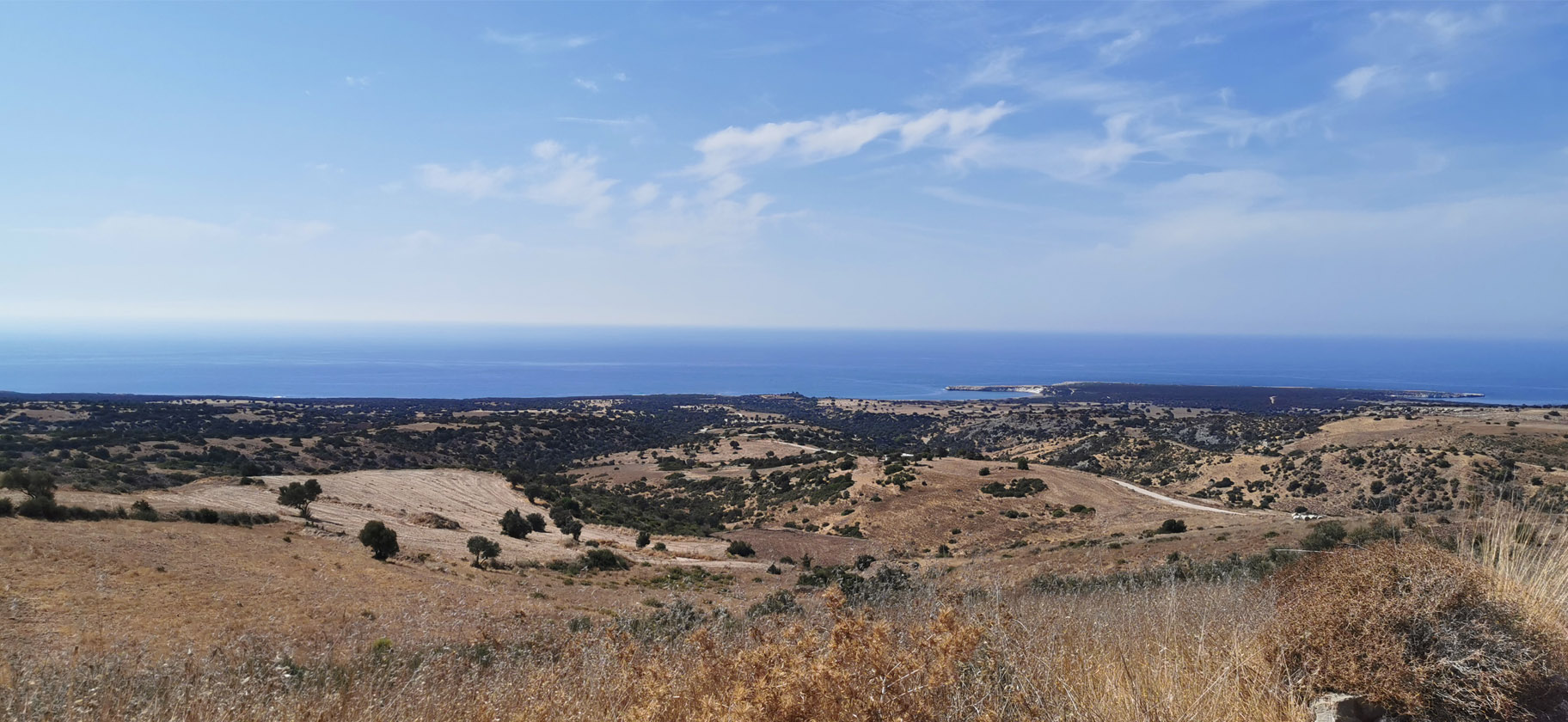 The view of the sea in the rearview mirror is stunning. Slopes of dry brush dotted with small trees that seem almost silhouetted in the noonday sun create a sharp line on the horizon with the water. The small villages in the mountains bring a touch of colour with magenta-hued bougainvillea that grows along the sides of homes – a sign of regular watering and maintenance in an otherwise arid environment. There are small patches of smooth asphalt and the smell of hot mezzes emanating from local taverns. The sun is hot and the pace of life is slow. The eyes of a group of men playing backgammon and drinking tea linger on my car as its motor interrupts the stillness of the early afternoon.
The view of the sea in the rearview mirror is stunning. Slopes of dry brush dotted with small trees that seem almost silhouetted in the noonday sun create a sharp line on the horizon with the water. The small villages in the mountains bring a touch of colour with magenta-hued bougainvillea that grows along the sides of homes – a sign of regular watering and maintenance in an otherwise arid environment. There are small patches of smooth asphalt and the smell of hot mezzes emanating from local taverns. The sun is hot and the pace of life is slow. The eyes of a group of men playing backgammon and drinking tea linger on my car as its motor interrupts the stillness of the early afternoon.
Cars are more regular between the villages along the highway that runs between Poli and Paphos but it is the herds of cattle and sheep crossing the roads that cause the traffic to stop altogether. Out of Poli heading north toward Pyrgos, the highway runs straight as an arrow along the sea to my left and the mountains to my right. The emergence of speed bumps, an occasional seaside restaurant, and the magenta-coloured flowers indicate the presence of local life. Outside Pachyammos it is all switchbacks up the side of the mountain around a small enclave of Turkish-controlled Northern Cyprus and then back down to the coast. Pyrgos is a one-road little town with smaller paths veering off along the side of the mountain, usually leading to a monastery. The road is lined with lemon, pomelo, and pomegranate trees. There is a gas station and a few restaurants and my presence – the presence of a stranger – is noted by the locals who while away the hours in the local cafés. All the lights are off and most shops seem abandoned or closed, but it is just that in this part of the country, away from the cities and where the median age is well into autumn, the pace of life is slow.
Kampos lies deep in the Paphos Forest in the interior of Cyprus – toward the very heart of the island. It is only about 40 kilometres from Pyrgos but the road is not exactly straight. The road winds around the mountains and valleys deep in a dense forest of cedar trees, but I convince myself that, despite only having a quarter tank, I have enough gas to make the trip – at worst I will pass a gas station along the way. Every sign along the way points toward one of the many monasteries that have short paths that break off from the main road. Like Pyrgos, Kampos is a bit of a one-road town with a few small cafés, a monastery, and an elegant mountain stream running through the center. 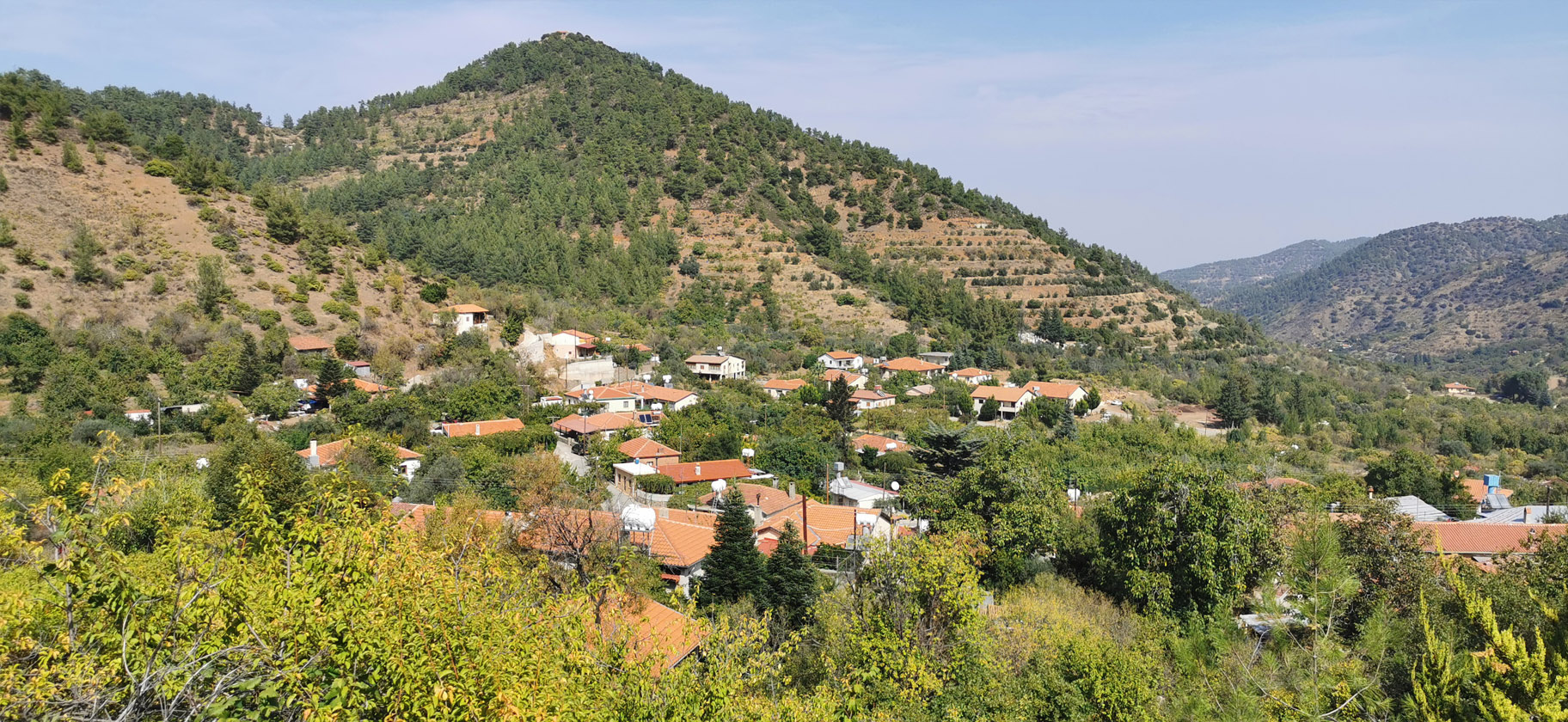 The way back to Pyrgos is an uncertain one and only 5 kilometres out and my fuel gauge starts indicating that it is time to fill up. Three bars left on the dashboard mean to me that I have at least 50 kilometres worth of fuel to go which seems like enough, but it is best not to tempt fate and fill up the second I find a station. I am still 10 kilometres from the Cedar Valley junction and my three bars are quickly reduced to one. I pull over and take a moment to search out gas stations on google maps and the nearest is back in Pyrgos where I started my journey, more than 40 kilometres away. I am starting to suspect I do not have enough fuel and I begin to worry and second-guess my route and my decisions. I start wondering what would happen if I do actually run out of gas in the middle of the Paphos Forest. If I turn around and go back the way I came I definitely will not make it, so it is best to continue on around the circuit with the big question being: return to Pyrgos or take the route to Poli which is the major centre and more likely to have a gas station along the way. A few motorists, foreigners hunting down every last monastery, pass me along the road and I flag them down to ask if they passed a petrol station recently. All of them confirm the worst that the last station they saw was back in Poli more than 40km away.
The way back to Pyrgos is an uncertain one and only 5 kilometres out and my fuel gauge starts indicating that it is time to fill up. Three bars left on the dashboard mean to me that I have at least 50 kilometres worth of fuel to go which seems like enough, but it is best not to tempt fate and fill up the second I find a station. I am still 10 kilometres from the Cedar Valley junction and my three bars are quickly reduced to one. I pull over and take a moment to search out gas stations on google maps and the nearest is back in Pyrgos where I started my journey, more than 40 kilometres away. I am starting to suspect I do not have enough fuel and I begin to worry and second-guess my route and my decisions. I start wondering what would happen if I do actually run out of gas in the middle of the Paphos Forest. If I turn around and go back the way I came I definitely will not make it, so it is best to continue on around the circuit with the big question being: return to Pyrgos or take the route to Poli which is the major centre and more likely to have a gas station along the way. A few motorists, foreigners hunting down every last monastery, pass me along the road and I flag them down to ask if they passed a petrol station recently. All of them confirm the worst that the last station they saw was back in Poli more than 40km away.
The single bar of fuel is flashing at me and my eyes are focused half on the road and half on that last bar. I come to a T-junction with one sign pointing to Pyrgos, the other just says “services 2km”. Making it all the way to Pyrgos seems like a 50-50 proposition, but I can still roll for 2 km hoping that “services” means fuel. There is a near-deserted mountain camp with nothing but an outdoor café run by locals who have not seen any visitors in days. There is a ranger station next door and I inquire about fuel fully prepared to siphon from whatever resources they have. I even offer to pay to have someone drive me to a station to pick up fuel and return it to the car, but they refuse. The ranger looks at me like I am a lunatic. “Listen,” he says, “You should be able to glide to Poli no problem. At worst, you’ll get close enough that someone there will be able to help you.” I lost 2 of 3 bars on the fuel gauge going less than 10 kilometres. How am I supposed to cover another 40 with just one bar? The math just does not add up. “The key,” he says, “is when you feel yourself going uphill, don’t accelerate. That’s where you lose all of your fuel. Go slow up the hills with the engine running low, and then just glide down. You’ll make it”.
I leave the ranger station and am met with a sign that says “Poli 38”. Only now am I realizing that it is well over 30 degrees and the back of my t-shirt is soaked through because I can not run the air-conditioner because it just wastes more fuel. I look back down at the dash making note of every kilometre of progress I make. I look back down at my GPS that has calculated the number of minutes until my arrival at the nearest gas station and then glance at the dashboard clock to remark at what time, exactly, I should arrive. My eyes are constantly shifting between the road, the dash, the GPS, and the clock. Half an hour elapses and I have made it 20 kilometres closer to my goal. I may just make it. I look back at my dashboard and there are no bars left. It is fumes and a prayer from here until Poli. Every meter uphill is controlled keeping the RPMs between 1500 and 2000 and every stride downhill is done dive-bombing with my foot off the gas and off the brake as my death grip tilts the wheel with fury from left to right holding as best I can to every curve in the road.
Ten kilometres out of Poli, near Lysos, and the road flattens out. The forest is now behind me and civilization in front with the car still rolling, and I am hit with a feeling that my fate will not be condemned to breaking down in the forest. I get excited when the GPS calls out, “In 400 meters, your destination is on the right”. At worst, I can now roll the car. Three hundred, two hundred, one hundred meters, wait a minute, there’s no petrol station. Nothing but fields and small homes. Outdated, erroneous, information. A wild goose chase. I stop the car and do another search for petrol stations. The nearest is still another three and a half kilometres away. I am almost afraid to press on the gas pedal at this point as I slowly, but deliberately continue our journey. My heart is pounding out of my chest with nervous anxiety, my mouth feels like cotton. I keep trying to tell myself that it is no big deal. At this point, if I do run out of gas, it will just be a minor inconvenience that I can quickly and easily solve – it might even make a fun story one day. I arrive in Poli and traffic picks up. I have seen these roads before. Once again the GPS has got it wrong, but I can see the station only a few hundred meters away. “In one hundred meters,” she says, “make a U-turn.” I ignore her as the car jolts forward and the engine begins to sputter. The touch of my foot on the pedal is light as a feather and just enough to propel her forward. The steady purr of the engine has become inconsistent as she begins to cough. She jolts forward again. It is a sign that she is dying, but each jolt feels like a last gasp effort to get to our goal. She coughs again and I put the car into neutral and we glide into the station coming to a full stop at the pump and I silence the engine. We made it.
I get out of the car to stretch my legs and look up at the sky to give thanks. It is a full-service station and I tell the attendant to fill it up. She looks at me quizzically.
“What’s wrong?” I ask.
“The gas tank is on the other side,” she responds. “Could you turn the car around?”
I get back in the car and turn the key. There is a screech from the starter as it repeats, but not enough gas to start the car. I took her as far as she’d go.
The attendant comes to the window and smiles. “Don’t worry, sir. I will make it reach.”
